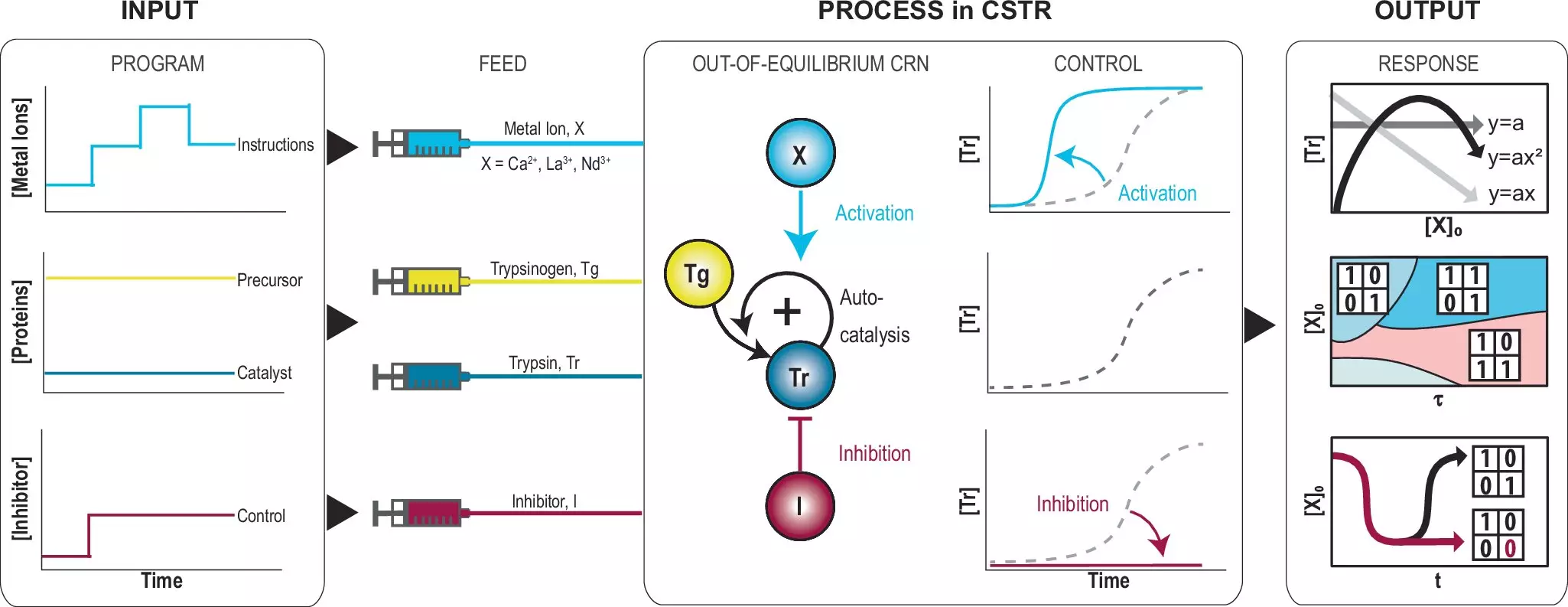Recent advancements at the University of Twente reveal a groundbreaking approach to controlling chemical reactions using metal ions, an endeavor that could redefine the landscape of computing. Published in *Nature Communications*, this research offers insights that converge biology and artificial intelligence. Unlike conventional computers, which consume excessive energy to process information, biological systems excel through concise and efficient chemical reactions. The ambition of replicating this naturally occurring phenomenon has driven scientists for decades, and this latest study pushes the boundaries of what’s possible in the realm of molecular computing.
Central to this study is the recognition that complex chemical reactions can serve as a means of processing information. The researchers have found a way to mimic mathematical functions using metal ions, effectively employing them to represent polynomials and Boolean logic, which are critical in computational operations. This dual approach offers significant implications, as it bridges the gap between discrete data handling and the fluidity of biochemical systems. As the team demonstrated, these metal ion systems are capable of executing tasks such as linear equation solving while simultaneously making logical decisions based on input variations.
One compelling aspect of this research is the ability to program the chemical reactions to retain a form of memory. This memory is crucial for intelligent systems that can adapt and evolve over time. Researcher Albert Wong describes this development as a potential cornerstone for creating sophisticated systems mimicking human brain functions. The work on autocatalytic reactions stands out; these self-accelerating processes allowed researchers to manipulate the transition of trypsinogen to trypsin — a critical reaction relevant in biochemistry. By introducing a moderating substance, the researchers established a state where the system could stabilize in two distinct modes, effectively allowing it to “remember” its previous state and thereby introducing a level of complexity hitherto unseen in chemical networks.
The ramifications of this study extend far beyond immediate applications in artificial intelligence. There is a growing anticipation that such advances could significantly influence fields such as nanobiotechnology and the exploration of life’s chemical origins. By understanding how simple chemical networks can be programmed, researchers could unlock new pathways in material science and even create interactive systems that respond intelligently to environmental stimuli. As research continues to unfold, the interplay between chemistry and information technology may lead to revolutionary new tools and technologies that closely echo the capabilities of the human brain.
The research conducted at the University of Twente signals a pivotal shift in how we perceive and utilize chemical reactions as information processing units. With the newfound ability to employ metal ions in this manner, the potential for developing systems that not only replicate but also innovate biological traits has never been clearer. As scientists delve deeper into this fascinating intersection of chemistry and computing, we stand on the verge of a transformative era that may redefine our understanding of intelligence itself.

